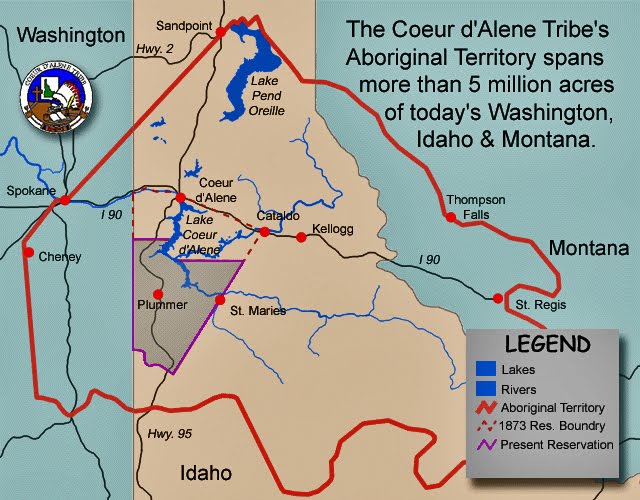|
Coeur D'Alene Tribe
The Coeur d'Alene (also ''Skitswish''; natively ''Schi̲tsu'umsh'') are a Native American nation and one of five federally recognized tribes in the state of Idaho. The Coeur d'Alene have sovereign control of their Coeur d'Alene Reservation, which includes a significant portion of Lake Coeur d'Alene and its submerged lands. In ''Idaho v. United States'' (2001), the United States Supreme Court ruled against the state's claim of the submerged lands of the lower third of Lake Coeur d'Alene and related waters of the St. Joe River. It said that the Coeur d'Alene were the traditional owners and that the Executive Branch and Congress had clearly included this area in their reservation, with compensation for ceded territory. This area was designated in 1983 by the Environmental Protection Agency as Bunker Hill Mine and Smelting Complex, the nation's second-largest Superfund site for cleanup. Concerned at the slow pace of progress, in 1991 the tribe filed suit against mining compa ... [...More Info...] [...Related Items...] OR: [Wikipedia] [Google] [Baidu] |
English Language
English is a West Germanic language of the Indo-European language family, with its earliest forms spoken by the inhabitants of early medieval England. It is named after the Angles, one of the ancient Germanic peoples that migrated to the island of Great Britain. Existing on a dialect continuum with Scots, and then closest related to the Low Saxon and Frisian languages, English is genealogically West Germanic. However, its vocabulary is also distinctively influenced by dialects of France (about 29% of Modern English words) and Latin (also about 29%), plus some grammar and a small amount of core vocabulary influenced by Old Norse (a North Germanic language). Speakers of English are called Anglophones. The earliest forms of English, collectively known as Old English, evolved from a group of West Germanic ( Ingvaeonic) dialects brought to Great Britain by Anglo-Saxon settlers in the 5th century and further mutated by Norse-speaking Viking settlers starting in ... [...More Info...] [...Related Items...] OR: [Wikipedia] [Google] [Baidu] |
